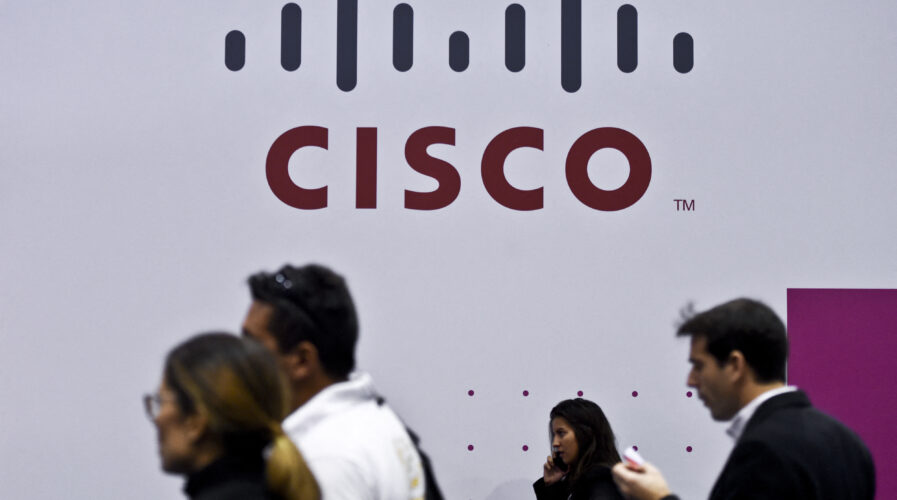
Cisco to address the digital skills gap in Malaysia, aims to train 141k people by 2032. (Photo by PATRICIA DE MELO MOREIRA / AFP)
CISCO Security Cloud: Moving security operations to the cloud with no lock-in
- Cisco unveils new strategy to help enterprises connect their entire security architecture via a new platform, Cisco Security Cloud.
- The Cisco Security Cloud is designed to be the “industry’s most open platform, protecting the integrity of the entire IT ecosystem—without public cloud lock-in.
Managing enterprises’ security has dramatically changed over the last 24 months or so. It has come to a point where more organizations are embracing the cloud, while employees are far more mobile, performing their jobs from a far wider range of devices and locations than was once possible. Therefore, it is inevitable that IT landscapes are becoming more complex, leading to the need of a more advanced approach to infrastructure security.
To meet such needs, solution provider giant CISCO came up with a strategy to help enterprises connect their entire security architecture via a new platform–Cisco Security Cloud. Unveiled at RSA 2022 as the basis of the company’s security plan for the future, Cisco Security Cloud is basically a unified, open-standards-based platform that will ensure security across hybrid and multi-cloud environments. It has the capabilities to securely connect people, applications and devices located anywhere.
According to Cisco in a statement, the platform will include threat prevention, detection, response and remediation at scale, with no vendor lock-in. “The company is designing the Cisco Security Cloud to be the industry’s most open platform, protecting the integrity of the entire IT ecosystem – without public cloud lock-in,” it said.
As Cisco’s approach with its flagship Webex collaboration platform, the company has also been working on Cisco Security Cloud for some time now and will continue to develop the platform over the next several years. According to Jeetu Patel, Executive VP and General Manager of Security and Collaboration at Cisco, the company is uniquely positioned due to its scale, breadth of solutions and cloud neutral business model to meet the evolving needs of company to deal with the complexities of hybrid work, continued acceleration of cloud adoption, and the ever-advancing threat landscape.
In short, the company’s vision is one platform that has networking services, security services, threat intelligence services, a unified policy engine, an open set of APIs as well as a common control tower for management that makes it easy for administrators to use. The company also said that the Cisco Security Cloud’s open APIs will allow for integration with third-party solutions, as well as a security marketplace.
Cloud security innovations
The leader in enterprise networking and security unveiled that it is also introducing less intrusive methods for risk-based authentication, including the patent-pending Wi-Fi Fingerprint as an effective location proxy without compromising user privacy.
“To evaluate risk after a user logs in, Cisco is building session trust analysis using the open Shared Signals and Events standards to share information between vendors. Cisco unveiled the first integration of this technology with a demo of Cisco Secure Access by Duo and Box,” the company said.
The move basically ushers in the next generation of zero trust, therefore the creation of solutions that constantly verifies user and device identity, device posture, vulnerabilities, and indicators of compromise. These intelligent checks take place in the background, leaving the user to work without security getting in the way, Cisco said.
Box CEO and Co-founder Aaron Levie also shared that his company is excited to strengthen its relationship with Cisco and deliver customers with a powerful new tool that enables them to act on changes in risk dynamically and in near real-time.
“You can expect to see more innovation and execution from Box and Cisco that help businesses protect their content across any location, application, or device,” said Levie.
Additionally, Cisco also introduced Cisco+ Secure Connect Now, a unified Secure Access Service Edge (SASE) solution, to simplify how organizations connect and protect users, things, and applications, anywhere. As of now, it is available in several countries to quickly deploy secure access service edge (SASE) and ease day-to-day operations through a cloud-managed platform.
READ MORE
- Ethical AI: The renewed importance of safeguarding data and customer privacy in Generative AI applications
- How Japan balances AI-driven opportunities with cybersecurity needs
- Deploying SASE: Benchmarking your approach
- Insurance everywhere all at once: the digital transformation of the APAC insurance industry
- Google parent Alphabet eyes HubSpot: A potential acquisition shaping the future of CRM


